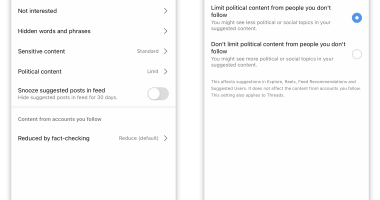Some lawmakers and healthcare providers are calling on the Biden administration to extend a deadline for hospitals to spend emergency coronavirus funding, with more than $30 billion remaining to be distributed out of about $187 billion Congress approved.
The money is intended to help hospitals cover losses related to the Covid-19 pandemic, but delays have dogged the program. Hospitals must spend the money by June 30 or return it, but many say they need more time because they are still feeling the financial sting from the pandemic.
Health and Human Services Secretary Xavier Becerra said his agency was reviewing the extension requests.
“We are again going to be driven by the facts in this case to make sure those providers who have a need get those needs addressed,” he said at a recent House subcommittee budget hearing about the distribution of the funds.

Hospitals say their Covid-19 costs are continuing, even as the U.S. vaccination effort has widely gained traction.
Photo: shannon stapleton/Reuters
Congress allocated the money to the provider relief fund in several bills dating to the Trump administration. About $24 billion remained in the Cares Act Provider Relief Fund as of May 17, not including a further $8.5 billion added for rural health providers from the $1.9 trillion American Rescue Plan Act passed in March, according to HHS spokesman Scott Kodish.
Hospital leaders say they are still taking a financial hit from the pandemic despite the nationwide increase in vaccinations.
Hospitals are continuing to treat Covid-19 patients, and intensive-care-unit capacity is still high in some parts of the country. Expenses for staffing, drugs, supplies and services such as sterilization have risen, while revenue from elective procedures has declined. While the year-end surge in Covid-19 cases may have subsided, hospitals’ operating costs have remained high with increased infection-control measures.
The number of Covid-19 patients in U.S. hospitals has fallen to about 34,380, according to HHS data for the seven-day average. The seven-day average peak in mid-January was roughly 137,900.
The funds’ allocation has taken time because HHS initially had to determine how to dole out the money, health analysts say. Administration officials said they were working to get the funds out quickly but are balancing the job with ensuring the money goes to hospitals and providers with the greatest need.
The pandemic has cost Erie County Medical Center Corp. $108 million, including lost revenue when the hospital halted surgery in December and January as Covid-19 cases surged, said Thomas Quatroche Jr., chief executive officer of the Buffalo, N.Y.-based system, which includes a nursing home. The system so far has received $63 million in federal relief, he said.
Erie County Medical Center will seek more relief, but first needs more information from federal health officials on how to apply, a spokesman said.
Dr. Quatroche urged HHS to quickly distribute remaining funds. He said the hospital system cut 70 jobs last year—about 2% of its total workforce of about 3,500—but hoped to avoid further layoffs with a hiring freeze this year.
“The institutions that continue to be on the front line are very challenged and struggling in many instances, and yet that money sits, not being used to help patients that still need the care,” he said.
The nation’s largest hospital-industry groups, including the American Hospital Association and the Catholic Health Association of the United States, urged HHS in a May 10 letter to extend the deadline from June 30 to the duration of the public-health emergency.
“Our hospitals will continue to face challenges beyond June 30 in providing adequate staffing, supplies, personal protective equipment, testing and vaccinations,” according to the letter.
Lawmakers such as Rep. Billy Long (R., Mo.) tried last week at the House budget hearing to get an answer on a possible deadline extension. “I have heard from several hospitals about the uncertainties surrounding this deadline given the changes in the reporting guidelines,” he said.
Two congresswomen from Iowa—Democratic Rep. Cindy Axne and Republican Rep. Mariannette Miller-Meeks —released a letter signed by 77 other House members that pressed the administration to speed up the rollout of the funds and push back the deadline to June 30, 2022.
Hospitals also would benefit from an extension because of the time it takes to comply with federal reporting requirements for how the money was used to offset lost revenue, according to the letter.

Temple University Hospital in Philadelphia is part of the Temple University Health System, which still treats dozens of Covid-19 patients on a given day.
Photo: Matt Slocum/Associated Press
Some lawmakers have expressed concern that funds went out without proper oversight. In one case, the Justice Department charged the owner of a home health-services business in February with embezzling government property by falsely claiming losses because of the pandemic.
The Biden administration has been working with a contractor to develop and recommend an audit strategy for payments that have gone out, with phased implementation to begin late this year, according to a report by the Government Accountability Office. The March report said HHS lacked documented policies for reviewing the payments to prevent fraud.
Many hospitals, meanwhile, expect continued higher costs stemming from the pandemic.
SHARE YOUR THOUGHTS
How do you think hospitals should deal with high costs from Covid-19 that are expected to continue? Join the conversation below.
The number of coronavirus patients hospitalized went up again in the spring at Temple University Health System in Philadelphia, said Nick Barcellona, the system’s chief financial officer. On an average day in April, 77 Covid-19 patients were in Temple University hospitals, an increase from 33 in February, he said. “We are still in the midst of this,” he said.
Temple’s hospitals have had a daily average of 58 Covid-19 patients in May.
The hospital system has received about $204 million of pandemic relief funds, but has a further $30 million of pandemic-related costs that officials estimate would be eligible under the program, he said. Temple hasn’t applied for additional aid, because the avenue to request remaining funds isn’t yet clear, he said.
Write to Stephanie Armour at [email protected] and Melanie Evans at [email protected]
Copyright ©2020 Dow Jones & Company, Inc. All Rights Reserved. 87990cbe856818d5eddac44c7b1cdeb8








